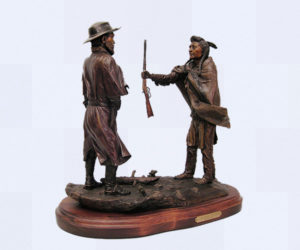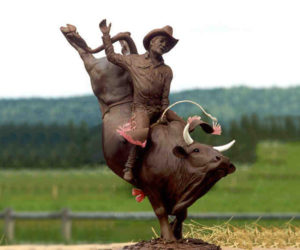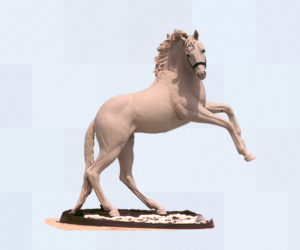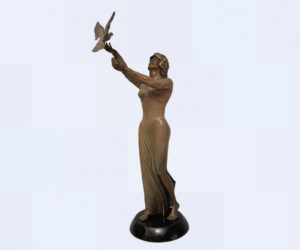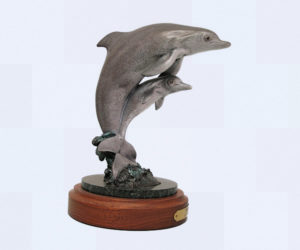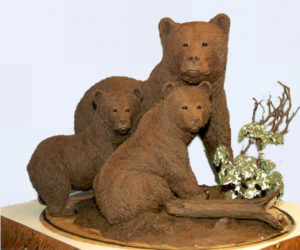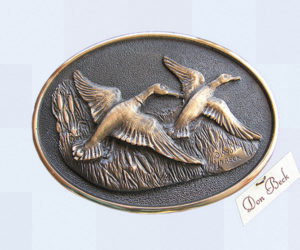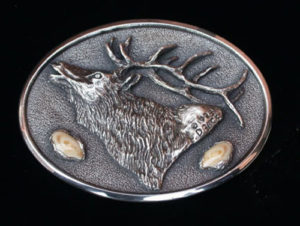Lost Wax Process
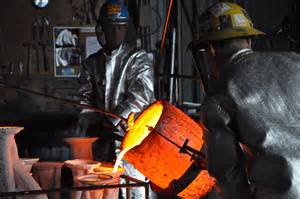 Lost wax process in casting Limited Edition Bronze Sculpture may seem expensive to some, but once one sees first hand the tremendous amount of time and handwork each bronze sculpture undergoes to become a finished bronze sculpture they fully realize that the bronze media is truly a work of art and gain a whole new appreciation for the bronze media. In fact the price of a bronze sculpture is well offset by the artisans involved throughout the entire process, from the inspiration, concept or design and creation of the original maquette by the artist to the artisans working at his or her designated art casting foundry to capture the finished bronze sculpture. A long tedious turn of events transforms the bronze sculptor’s original wax, clay or whatever media into a finished work of art in bronze or other cast metals, including precious metals.
Lost wax process in casting Limited Edition Bronze Sculpture may seem expensive to some, but once one sees first hand the tremendous amount of time and handwork each bronze sculpture undergoes to become a finished bronze sculpture they fully realize that the bronze media is truly a work of art and gain a whole new appreciation for the bronze media. In fact the price of a bronze sculpture is well offset by the artisans involved throughout the entire process, from the inspiration, concept or design and creation of the original maquette by the artist to the artisans working at his or her designated art casting foundry to capture the finished bronze sculpture. A long tedious turn of events transforms the bronze sculptor’s original wax, clay or whatever media into a finished work of art in bronze or other cast metals, including precious metals.
Don Beck’s sculpting media is mainly wax or clay. After receiving an inspiration, an extensive amount of time is spent in research prior to beginning of sculpting and during to enable the finished work to reflect minute detail, and authenticity as well as assuring the highest quality of bronze castings. Once the creation of the original maquette (clay or wax model) is completed the casting process is completed through the lost wax method as outlined below for each bronze sculpture.
Lost Wax Casting Process
-
Making the Mold from an original work of art
This step is by far the most critical. All the detail which appears on the original sculpture, delivered by the Sculptor, must be captured in this mold. The mold, depending on the size of the sculpture, is cut into several to many sections for casting.
-
Making the Wax casting.
Molten wax is poured into the mold to form layers of wax. This wax model is exact duplicate of the original casting; larger pieces, molds are flushed with wax to create hollow reproduction of original sculptures for better flow and detail of finished bronze castings.
-
Chasing the Wax
The wax is pulled from the mold and hand chased (re-detailed) by a skilled foundry artisan. Although the foundry artisan reproduces the original artwork, each piece may be slightly different from the next.
-
Spruing
Wax rods (gates) and pouring cup are attached to the wax casting in just the right positions. This will assure a full pour by allowing gases to escape.
-
The Ceramic Mold (Investment Casting)
In a temperature controlled climate of 72 degrees Fahrenheit, the wax casting is dipped into Investment liquid several times. On the first dip a fine powder is applied. On the next dip a course ceramic sand will be applied. This step is repeated several times, each increasing the coarseness of the material to create the ceramic mold. Between each dip, the ceramic layer must cure (dry) for 24 hrs before another layer can be applied.
-
Burn-Out
The ceramic shell is placed in a kiln and fired at approximately 2,000 degrees Fahrenheit. The shell bakes and the wax is melted (lost) from the shell. This creates a hollow ceramic shell mold. Thus the term “Lost Wax”.
-
Casting
The ceramic shell (mold) is removed from the kiln and immediately the molten bronze is poured into the shell. At the time of pouring, the bronze is 2100 degrees Fahrenheit. The bronze is melted in a crucible and removed from the furnace just prior to pouring to maintain proper heat and pour capabilities.
-
Removing the ceramic shell
After the casting has cooled several hours, the shell is carefully broken away leaving the unfinished bronze, with the use of air hammers.
-
Sandblasting
Any fragments of the ceramic shell are removed by sandblasting. The sculpture is also carefully inspected at this point.
Assembly
After sandblasting, the sculpture are welded together by the artisan.
-
Chasing
All the weld marks are chased, re-detailed and sanded for the Sculptor’s inspection and approval before the finishing processes.
-
Glass Beading
This is similar to sandblasting; the glass beads are extremely fine to ensure an even bronze finish prior to patination.
-
Patina
The bronze sculpture is first heated. The patina chemical is hand applied by the skilled foundry artist, with the Sculptor’s oversight and directions, to obtain the desired colorization.
-
Waxing
The wax is hand applied with heat to ensure protection of a beautiful lustrous patina on each bronze sculpture.
-
Mounting and final inspection
The bronze sculpture is mounted on a wood and/or marble base with name plate then velvet is applied to the bottom of the base and ready for the final inspection by its creator, the sculptor. Finally, the completed bronze sculpture is released to the Sculptor or packaged and shipped to its new owner.


